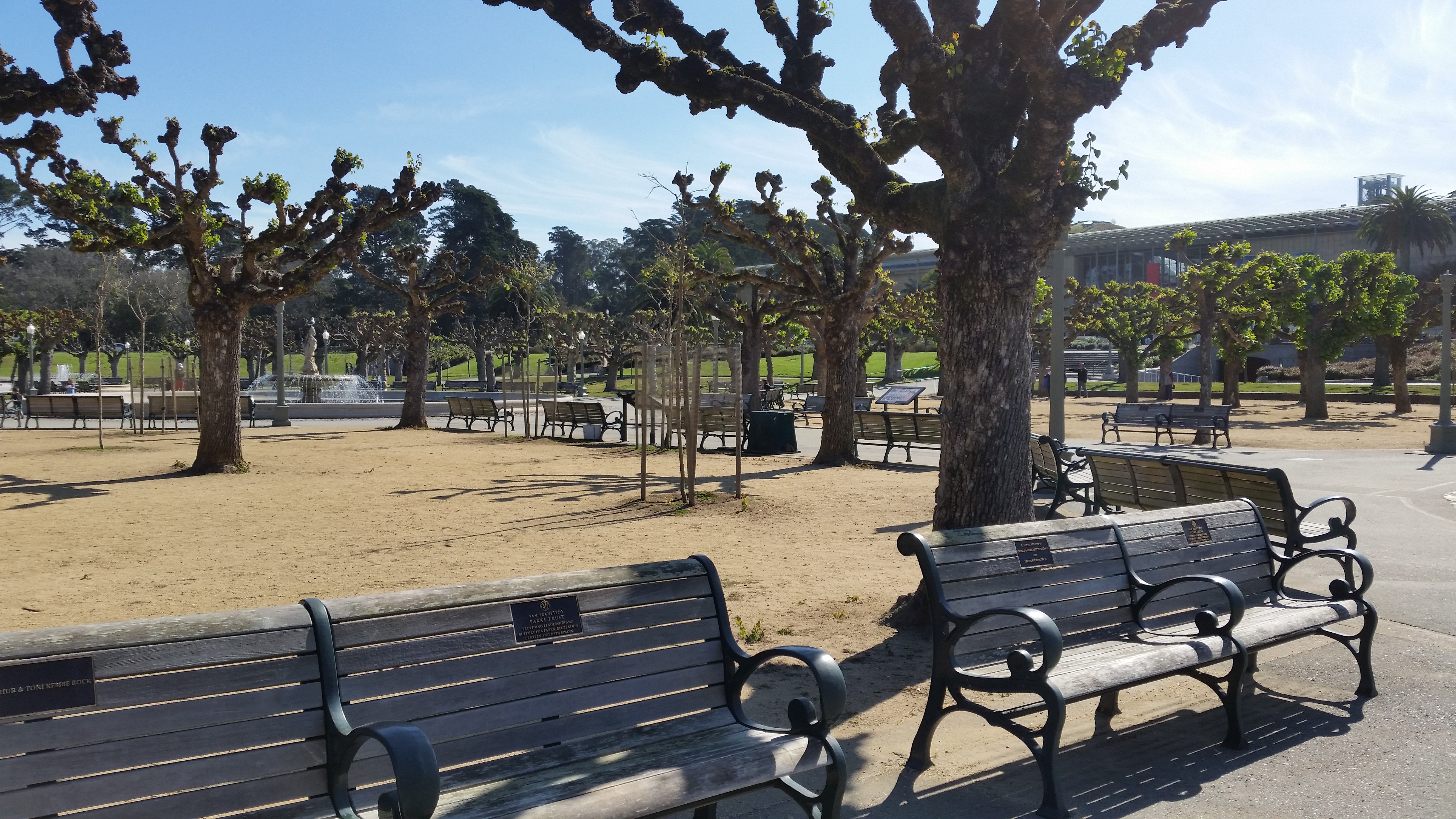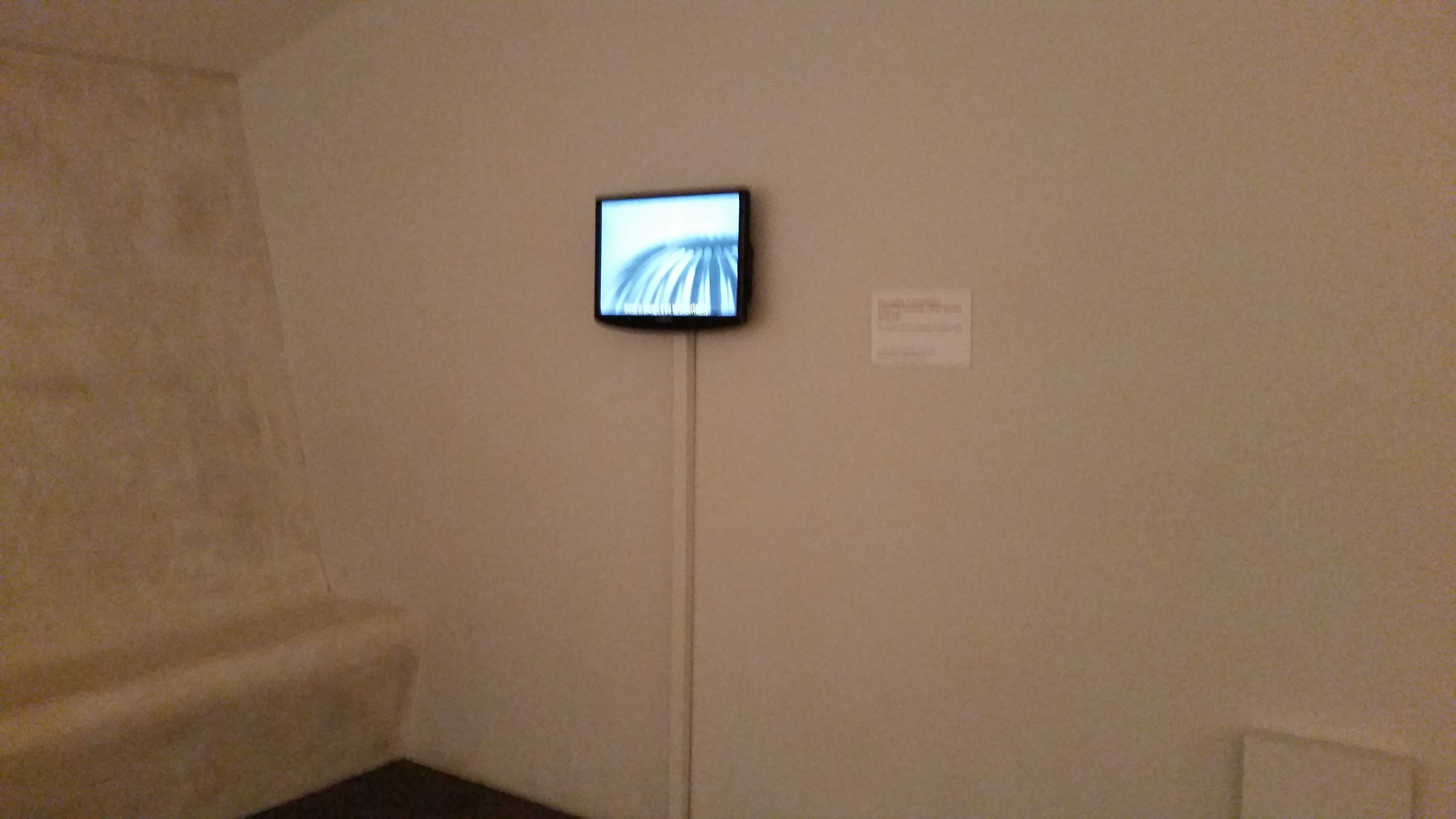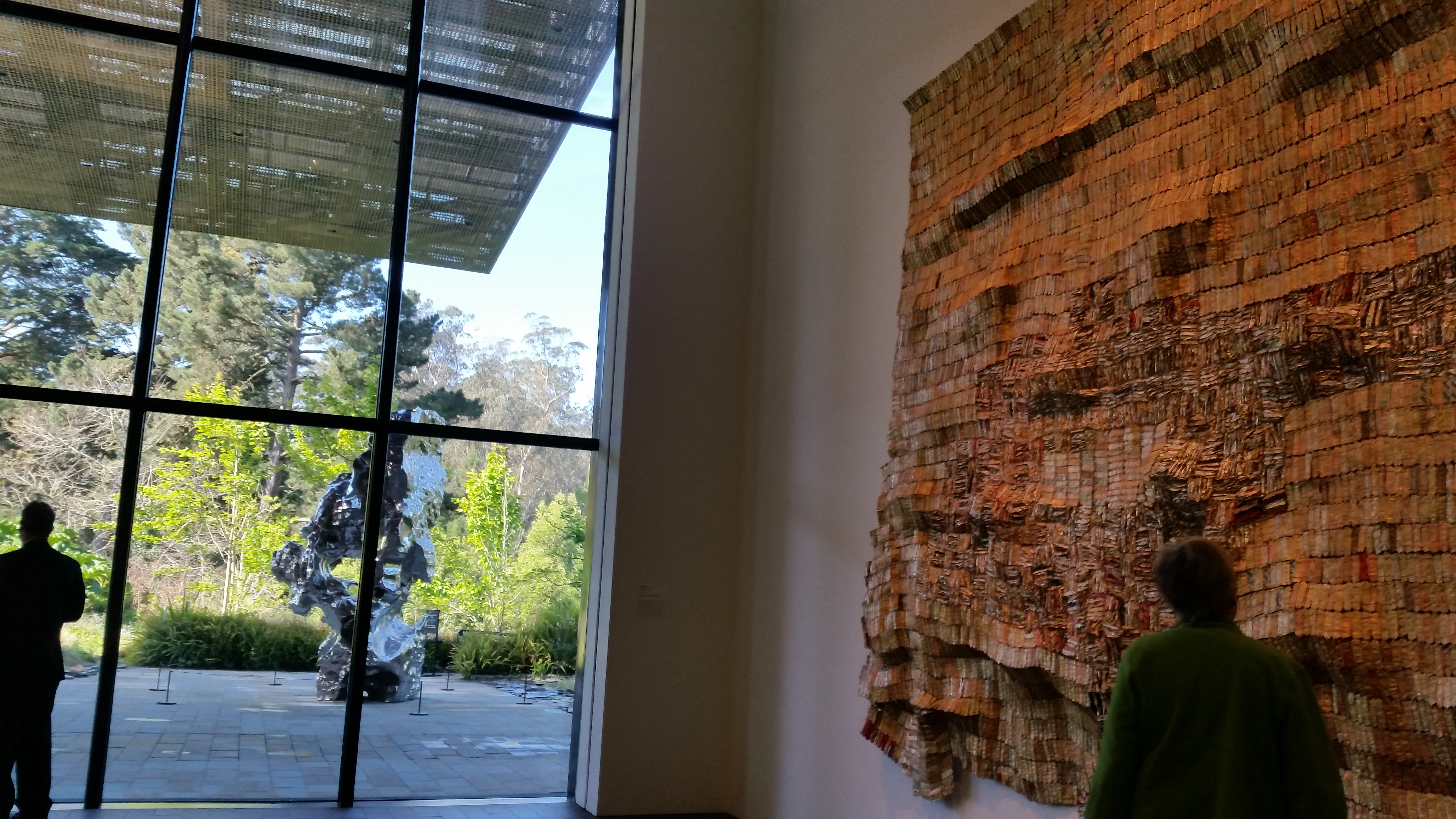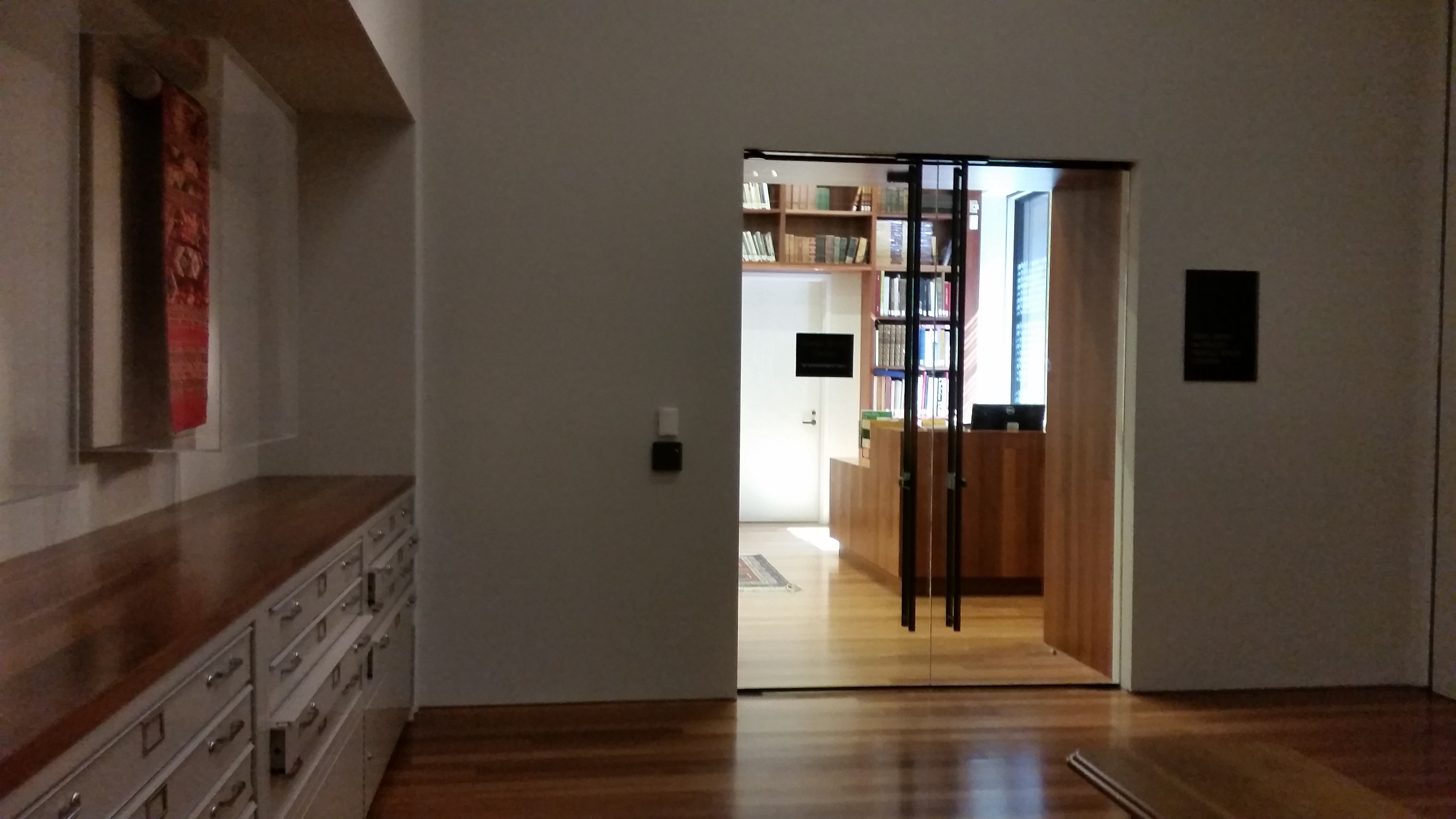de Young Ethnography
I visited the de Young Museum, an art museum in San Francisco. (I was in California during Spring Break.) This museum mostly seemed to have an older audience, though there was one group I saw around my age and some families with children. The outside of the museum is a beautiful park of trees and fountains, and the lobby is spacious. The museum has two floors and a basement where they keep a rotating exhibition you have to pay extra to visit. I didn’t end up visiting the basement.

The exhibits in the museum covered a range of mediums including paintings and sculptures, furniture, textiles, and old pottery and artifacts. They were grouped in collections, often having little description for individual pieces but a little blurb for each collection of items.
The museum didn’t use much technology as a whole. It did offer an audio tour. There was also a total of four displays in the museum. One was an art piece itself, a display split into many panels which transitioned between different photos of nature scenery. (As it was a borrowed piece, I could not take a photo of it.)
The second was in the section on pueblo pottery, showing how the pottery was made. Unfortunately, it was quite close to the loud lobby, so I felt like having a display with sound located right there wasn’t optimal in placement. But it was nice to be able to see the work put into the pottery. I did see some people sitting on the bench right there and watching the video.

The third was also a video on the art pieces being displayed in the room, except it was a large projection onto a wall rather than a small TV, probably since the room was quite dark and the pieces being displayed were also much larger. (They were large pieces of jewelry from Indonesia.) I didn’t have enough interest to stay and watch.
The fourth was a really cool display that was actually interactive, but it was hidden in a small corner behind an exhibit of African figurative sculptures. I almost missed the little alcove, but for my mom pointing it out. In this display you could look up more information about some individual sculptures, such as how scientists figured out what materials made up the sculpture, and sometimes some extra history. I found some of the pieces fascinating (I didn’t imagine that the wood sculpture with the snakeskin pattern was using actual lizard skin), and I wish they could have brought the display more attention. There were only about ten sculptures featured in this display.


Coming to this museum with a different perspective, I realized some things about their use of space. The rooms with paintings were more wide and bright open spaces, incorporating skylights and parts of walls turned into windows. I did like that use of glass window-like walls in some portions of the museum. You could even view a sculpture display outside from in one room, and it was a bright sunny day, which made it work really well.

The rooms with older artifacts and pottery were much darker and smaller rooms, probably a factor of trying to preserve the artifacts, but it also made the space feel a bit more confined, especially near the loud entrance.
I didn’t like that they hid this one interesting exhibit room on a textile collection behind a souvenir shop. I didn’t even recognize it as an exhibit at first. The huge set of drawers contained random samples of textiles from the collection, like a surprise in each drawer. It’s a neat way to display the pieces, but I imagine it would not have worked so well had the room not been empty of other people. There was also a giant (but restricted access) textile library past the room.


One other criticism I have for the museum was that it wasn’t always clear where the artifacts were from in one exhibit upstairs on New Guinea. I missed the large plaque titling the exhibit (I took a slightly different path to enter) and reading the little descriptions of the pieces only mentioned the “northern coast” or “Asmat people” or some river or other unrecognizable and vague terms, and I looked for a while before I finally asked a passing tour guide where the artifacts were from. There wasn’t even any map of the region anywhere. That could be one place it might be useful to see technology—knowing where items are from in a historical exhibit.
Overall, though, it was a fun experience to go through the museum. It wasn’t too loud or crowded that day (other than near the lobby), and the exhibits were fun.